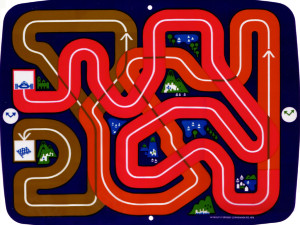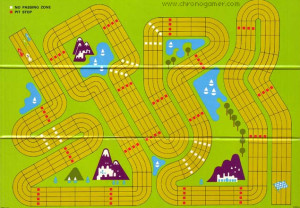Set the Wayback Machine for 1968…
It’s the Jet Age. Steppenwolf, The Doors and The Beatles are blasting from your turntable. Airplanes without propellers and radios without electrical cords are high-tech shit. And these new transistors that the eggheads are talking about are replacing vacuum tubes everywhere! Technology is all moving so fast, it’s downright groovy.
It was into this world that Ralph Baer brought a prototype of the very first video game home console: the Magnavox Odyssey.
Ralph Baer is a visionary. He’s still alive today, and he has rightly been lauded with the honours he deserves. He didn’t create the concept of video games, and there is some debate over their origin, but we all have this man to thank for bringing us the box of fun we can plug into our TVs.
Ralph started working on his prototype in 1966, and Magnavox brought it to market in 1972. Nobody really knew what a video game was back then, let alone what a video game console was and what it could do. To make things worse for the Odyssey, the information coming from Magnavox at first was kind of misleading in a crucial way. A lot of people thought you needed a Magnavox brand TV to use the Odyssey, and they didn’t want to have to shell out hard earned cash for this freaky, oddball gizmo and a brand new television set while they were at it.
I bet the Odyssey was a hard sell too. “Play games? On a television? Why would I want to do that? I’ll miss my shows!” were probably standard responses from befuddled customers and salespeople alike. Most of us have all the context of growing up in a world where video games have always been there, but try to imagine a time before that. Today, the word “gaming” usually means video games. Back then, games were things like marbles, jacks, dominoes, cards, chess, and other physical things you did with your hands. The thought of sitting down in front of a TV… and then using a device in your hands to control what was on the screen… that was some pretty out-there science fiction to most people.
So it’s not much wonder that the Odyssey didn’t immediately kick off a frenzy of interest in video games. And if you’ve ever seen the Odyssey in action, then you know that the titles for it don’t bear a lot of resemblance to the video games that were being made just five years later.
The tech behind the Odyssey is rudimentary. One or two controllers manipulate one or two white blocks on a black screen. Sometimes there are movable lines drawn on the blocks themselves to indicate spin or english controls. Sometimes there is a third block between them. Sometimes there is a line between the blocks. And that’s it. There wasn’t any way to keep score. There are no sounds. Although Ralph had developed ways to add sound, Magnavox wasn’t interested.
So how could something like that be turned into a game?
Overlays and rules. Overlays were sheets of plastic that you laid over your TV screen. Have a look at this video to see some commercials that Magnavox made for the Odyssey. You can see some of the overlays in action. For most games, they are a necessity. The rules came with each game, and specified what you were to do and how you were to play.
And sometimes the action on-screen wasn’t even the only part of the game. Many Odyssey games were part video game and part board game. These games came packed with printed fold-out boards and game pieces, dice, cards and instructions. The video game was integrated into the board game and vice-versa. I don’t think any company has made a game like this since the early 1980s.
I’ve never played or owned a real Odyssey, but from what I’ve read, some genuine fun can be had with the original console and game sets still intact. This definitely isn’t the type of console where you can just turn on and go, but if you have some friends over and some time to get into some truly retro fun, this might be quite an experience.
And believe it or not, the Odyssey holds the distinction (as far as I can tell) of being home to the first racing/driving game ever.
Wipeout (1972)
And what an action-packed game it is! Just look at it!
That’s my… uh… car on the left.
Wheeeeeeeeee!
Oh. I crashed.
Well, there’s no collision detection in this game. So nothing really happens. And this is about all there is to it if you don’t have the overlays and board game. Yes, Wipeout is a hybrid video-board game. The screenshots above were taken from the OdyEmu emulator, and I had to dust off my very first PC again with it’s native Windows 98 to run it.
The replay value without the accessories is essentially nil. But have a look at this review of the actual game. By the sound of it, this game would be worth a try. Here’s a look at the overlay:
And here’s what the board game looked like:
Interesting. But not really fun for the way that I seek out driving games to be fun. I suppose if you had just the overlay and a second player you could race your “cars” along the track and try to see who makes it to the end first without going outside the lines. But that sounds more like a good way to start arguments than a game.






